In the intricate world of SEO, certain practices are essential for maintaining a website’s reputation and standing. One such practice is “Disavowing Links.” If you’re unfamiliar with this term or have merely glossed over it in your SEO endeavors, now’s the time to delve deep. This guide will walk you through the importance of disavowing links, how to identify toxic backlinks and the streamlined process of doing so with SE Ranking.
Understanding the Imperative of Disavowing Links
Why Disavowing Links is a Cornerstone Practice
Search engines, with Google at the forefront, strive to offer users the most relevant and high-quality content. Their algorithms are tailored to weed out websites that employ manipulative tactics or are perceived to have diminished credibility. This is where the concept of “Disavowing Links” comes into play.
At its core, to disavow links is to inform search engines that certain inbound links to your site should be disregarded in assessing your site’s credibility and rank. It’s akin to telling Google, “Hey, I don’t vouch for these specific links; please exclude them when evaluating my website.”
Recommended reading: “Unleashing the Power of Social Media A Guide for Small Businesses to Achieve Massive Growth“
The Consequences of Ignoring Toxic Links
Toxic links can silently erode the credibility of your website. They can be the result of:
- Past black-hat SEO strategies.
- Negative SEO attacks by competitors.
- Unintentional linking from low-quality or spammy sites.
If not addressed, these links can lead to penalties from search engines, which can significantly impact your organic traffic and overall digital presence.

Mastering the Disavowal Process with SE Ranking
Spotting the Offenders: Identifying Toxic Links
Before diving into the disavowal process, it’s imperative to identify the problematic links. With SE Ranking’s Backlink Monitoring tool, you can get a comprehensive overview of your site’s backlink profile. Here’s what to look out for:
- Low Trust Scores: SE Ranking offers a trust score for each backlink. Links from domains with a low trust score are prime candidates for disavowal.
- Irrelevant Source: If you run a health blog and you’re getting backlinks from a site about underground rave parties, something’s amiss.
- Spammy Anchor Texts: Over-optimized or unnatural anchor texts can be a red flag.
The SE Ranking Disavowal Blueprint
Once you’ve earmarked the toxic links, SE Ranking streamlines the disavowal process:
- Marking Links for Disavowal: Within the platform, you can easily mark specific links you wish to disavow.
- Export & Format: SE Ranking allows for an efficient export of these links. Ensure you format them as per Google’s guidelines before submission.
- Engage Google’s Disavow Tool: With your list ready, head over to Google’s Disavow Tool and upload your file.
How to Disavow Links with SE Ranking: A Comprehensive Walkthrough
The challenge of addressing unwanted links can initially appear overwhelming. However, with SE Ranking by your side, the process becomes notably more manageable. Let’s delve into a systematic guide on using SE Ranking to disavow those problematic links:
- Initiating the Backlink Audit: Starting off, I accessed SE Ranking and made my way to the Backlink Monitoring section. This tool shed light on my entire backlink landscape, presenting each link with its respective quality score. The clarity it provided was truly commendable.
- Identifying the Culprits: SE Ranking’s intuitive design made the task of filtering out potentially harmful links a breeze. Links that scored low on quality or hailed from irrelevant domains quickly caught my attention.
- Flagging for Disavowal: One of the standout features of SE Ranking is the ability to flag specific links you intend to disavow. As I flagged each suspicious link, I could sense a growing assurance that my site’s integrity was being restored.
- Preparation for Google Submission: With my list of flagged links in place, SE Ranking facilitated an effortless export. I refined the exported file slightly to align with Google’s formatting preferences, ensuring it was primed for submission.
- Engaging Google’s Tools: The culmination of this process was to approach Google’s Disavow Tool. Uploading my file felt akin to dispatching a message, urging Google to overlook the flagged backlinks.
Armed with SE Ranking and this systematic approach, the task of disavowing links transitions from daunting to doable.
Disavow links with SE Ranking – a step-by-step guide
Open your SE Ranking main dashboard and navigate to the main tab. Choose Backlink Checker. For the best experience connect your Google Search Console to the tool.
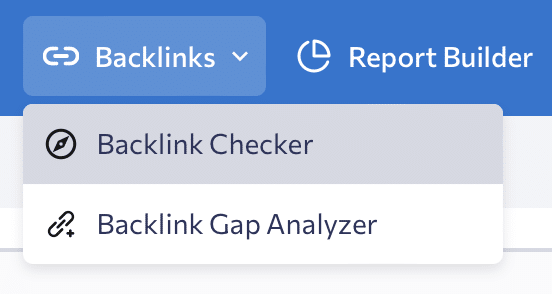
Once the Backlink Checker opens you have to run your backlink check first.

After the check is completed click on the report you would like to analyze further. I have chosen my personal Food Blog as a demo example.
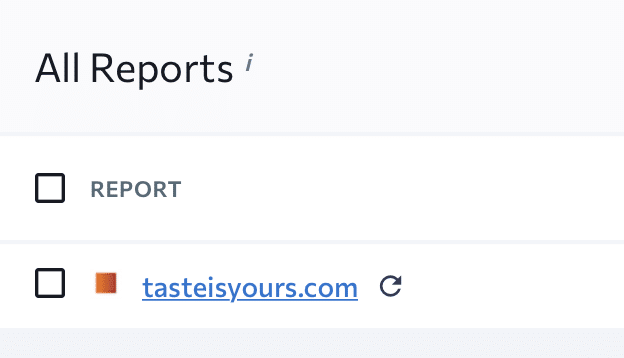
Open the full report and just under the main data you will see a tab called “TOXIC BACKLINKS“.
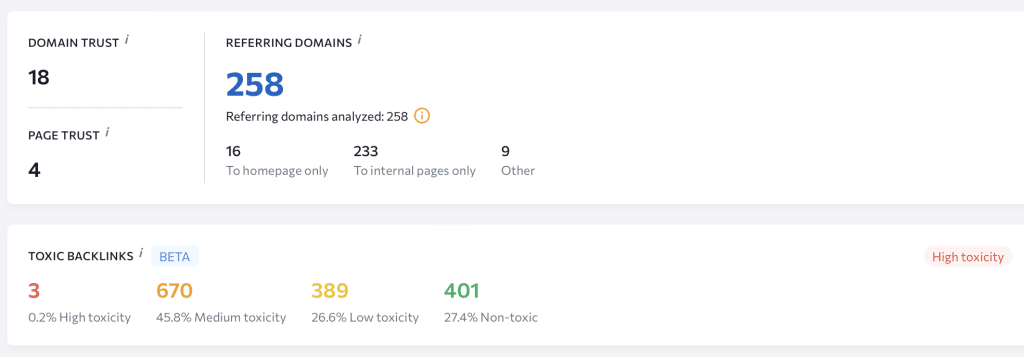
As you see my food blog has some portion of backlinks that are considered TOXIC. As a next step click on the links tagged with High Toxicity. Review the backlinks. Then do the same with the backlinks marked as Medium Toxic.
Mark the links you want to disavow and press the small disavow icon on the right side. Note, that you can either choose a single link or tag them in bulk. Which is awesome 🙂
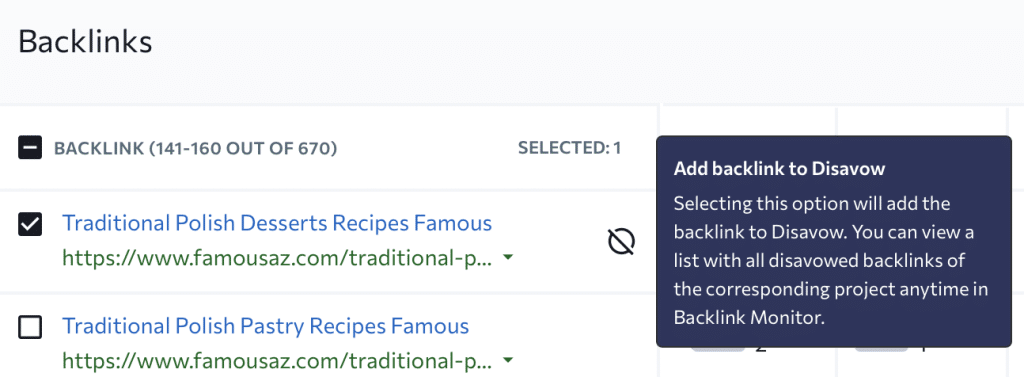
So now when you have tagged your links to disavow, move to the right side of the screen and hit the EXPORT button.
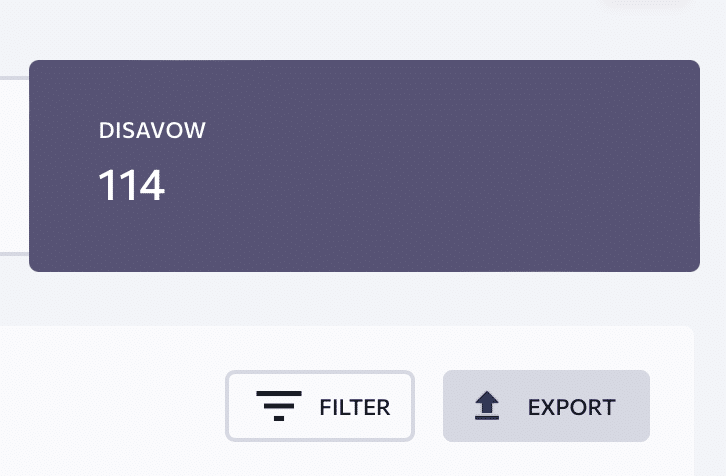
For the best experience choose the TXT file format.
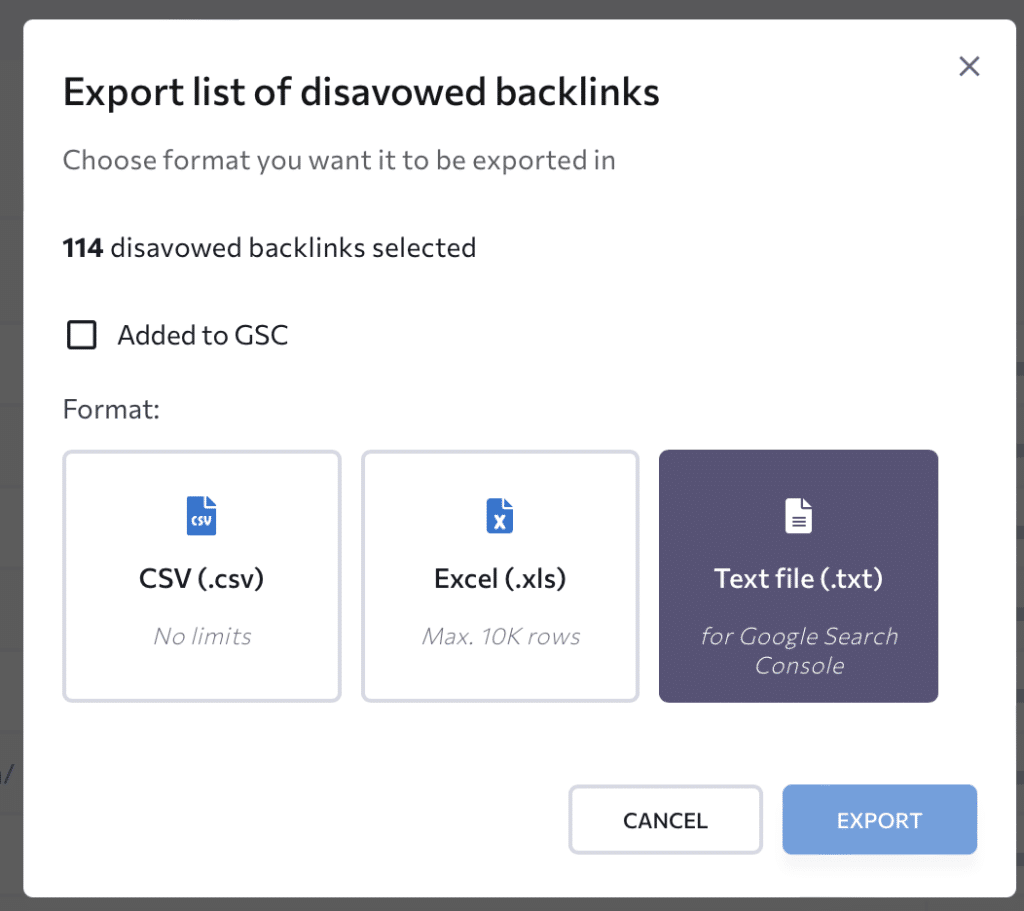
Now that you have your list of exported backlinks open your disavow tool in GSC. Select your property and upload your file. As you see I already had a file in the tool so I had to choose the replace button. When you do this for the first time, you will see an option for file upload.
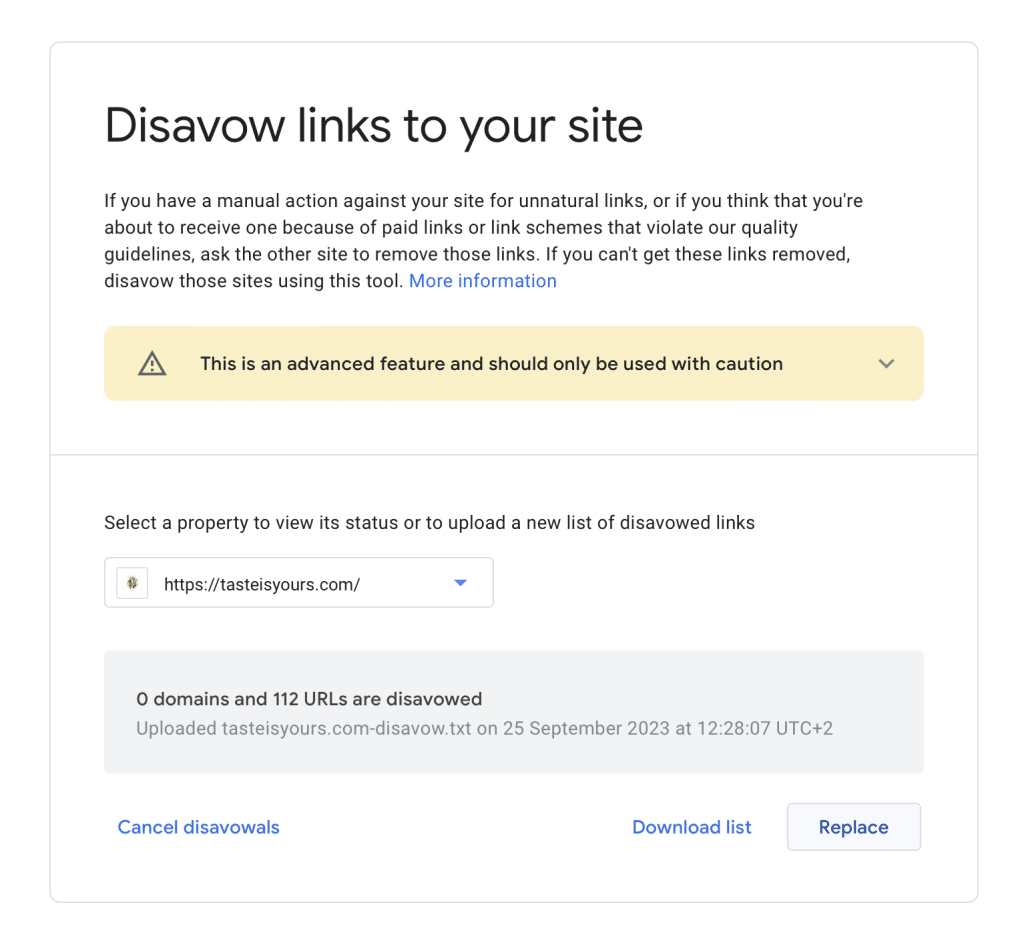
Within a few seconds, your file will be uploaded to GSC for disavow.
And you are good to go.
Beyond Disavowing: Maintaining a Clean Backlink Profile
Disavowing links is not a one-time task. As your website grows and gains more visibility, it’s susceptible to garnering more toxic links. Regular audits and checks are crucial. I recommend doing such a check once every 3-6 months. Or whenever you see a new toxic backlink in the SE Ranking Backling Checker.
SE Ranking can be set to offer periodic backlink reports, ensuring you’re always in the loop.
Also, while the focus is often on disavowing bad links, don’t forget the importance of building high-quality, organic backlinks. A robust, credible backlink profile can significantly augment your website’s SEO and overall online authority.
Recommended reading: “Why Your Blog Sucks: A Comprehensive Guide to Transforming Your Blog’s UX“
In Conclusion
The realm of SEO is vast, and while there are myriad strategies and tactics at play, certain foundational practices, like disavowing links, remain paramount. Leveraging tools like SE Ranking can significantly simplify the process, ensuring your website remains in good stead with search engines.
Stay proactive, remain informed, and here’s to cultivating a digital presence that truly stands out.



